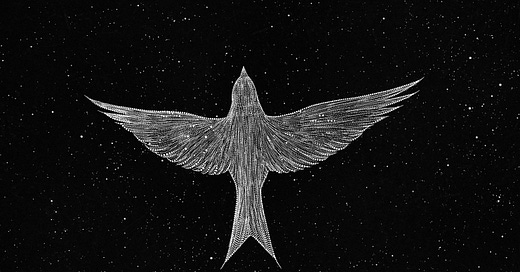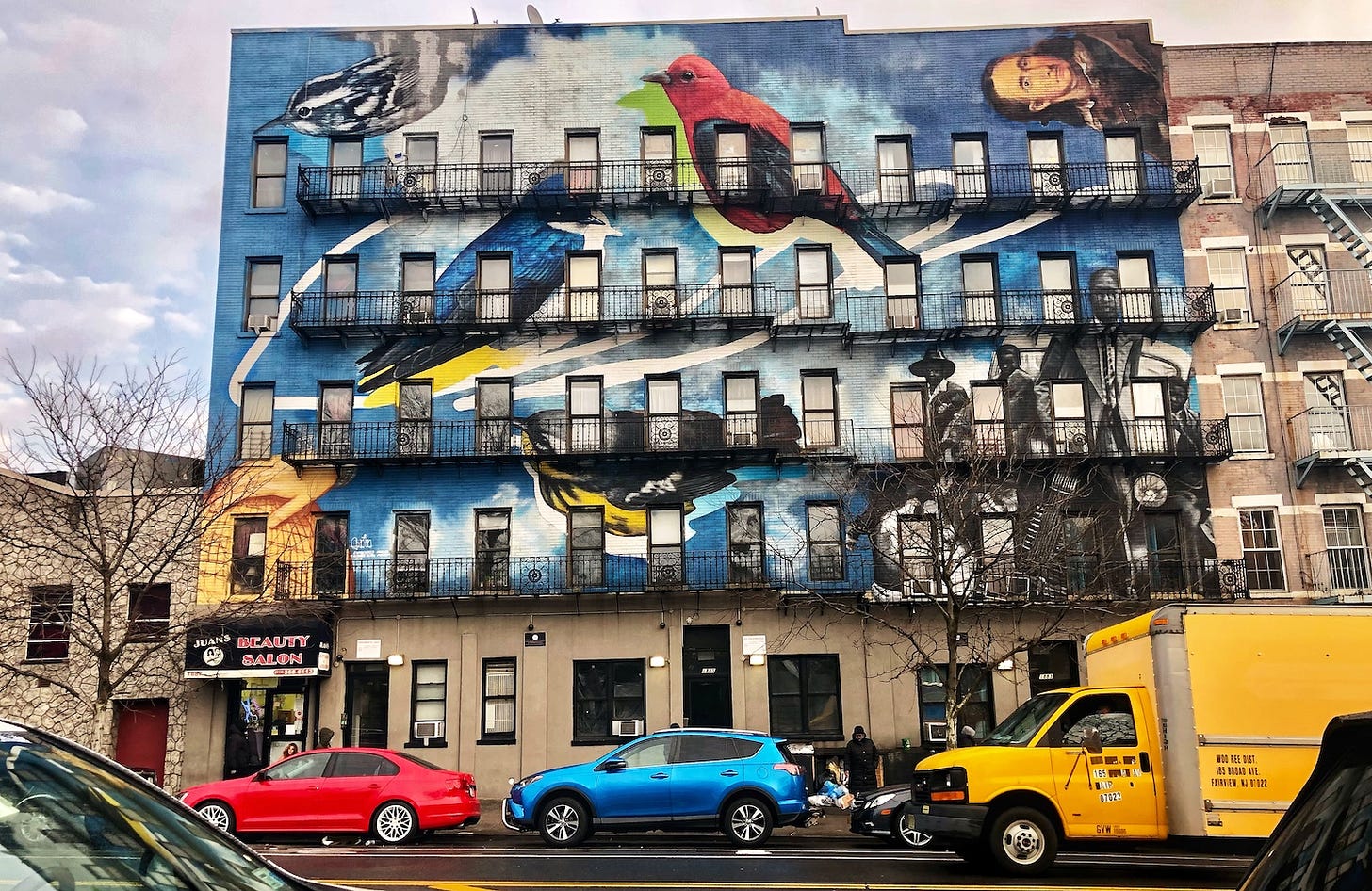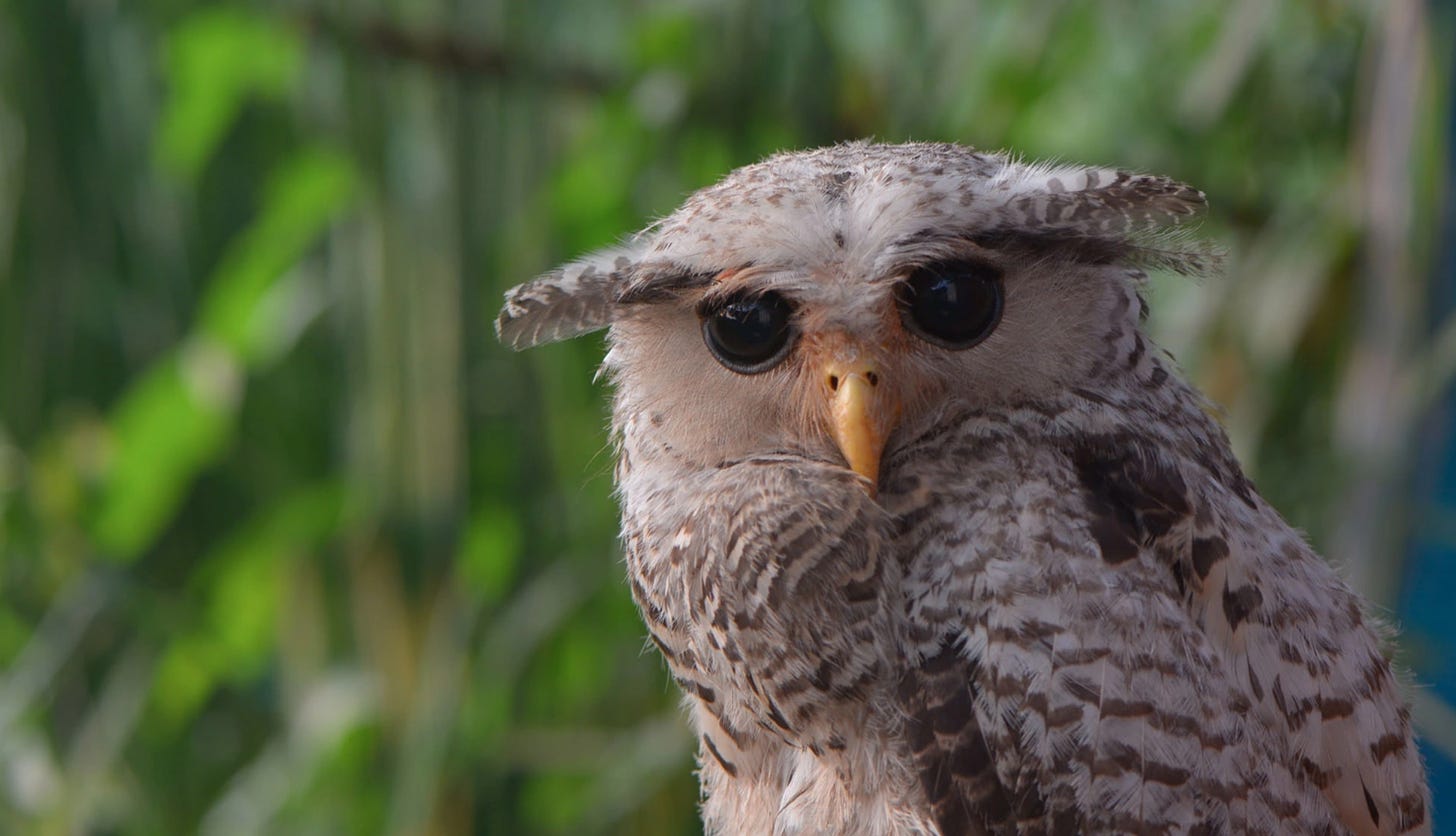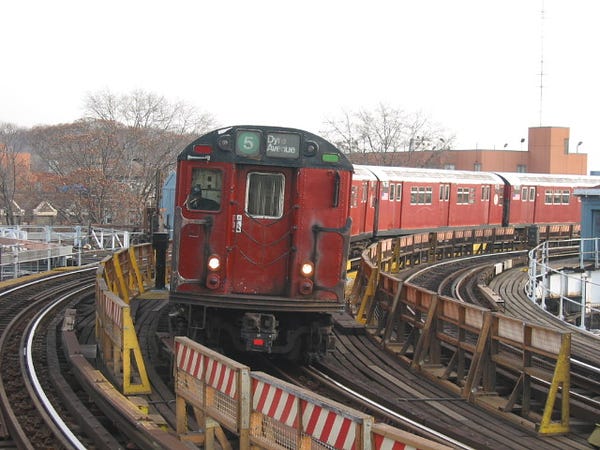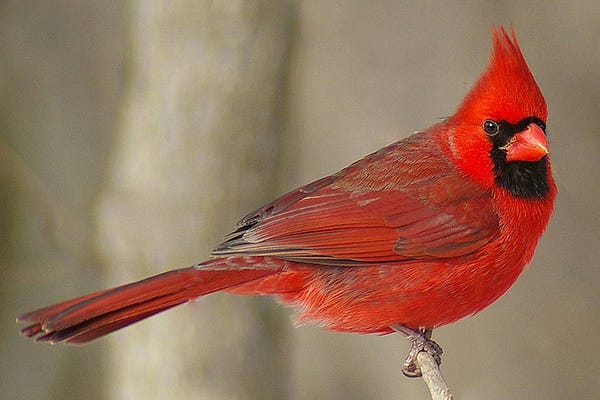The Curious About Everything Newsletter #4
Including reads about: why the pandemic hits some country harder than others, expectations, ghost kitchens, and more.
How is it already March? I do not know. As I say often, I’m honestly impressed with anyone who finishes a day without at least one minor meltdown. These are some trying times for the soul, yet if you look hard enough there’s always some sweetness to be found. The problem is allowing yourself to see it, because when we’re stuck in the mud, everything looks like dirt.
You’ll note that I skipped February’s newsletter, and that was done for two reasons: first, that I wanted to change up the schedule so that I can round up the best reads from the prior month in entirety, instead straddling half of two. So there are extra links to be had this month!
And the other is that all my standing up time was spent on a new Patreon launch. You’ve met Bob the Bluebird in CAE#3, but he’s joined now by Arthur the Raven and Fiona the Robin:
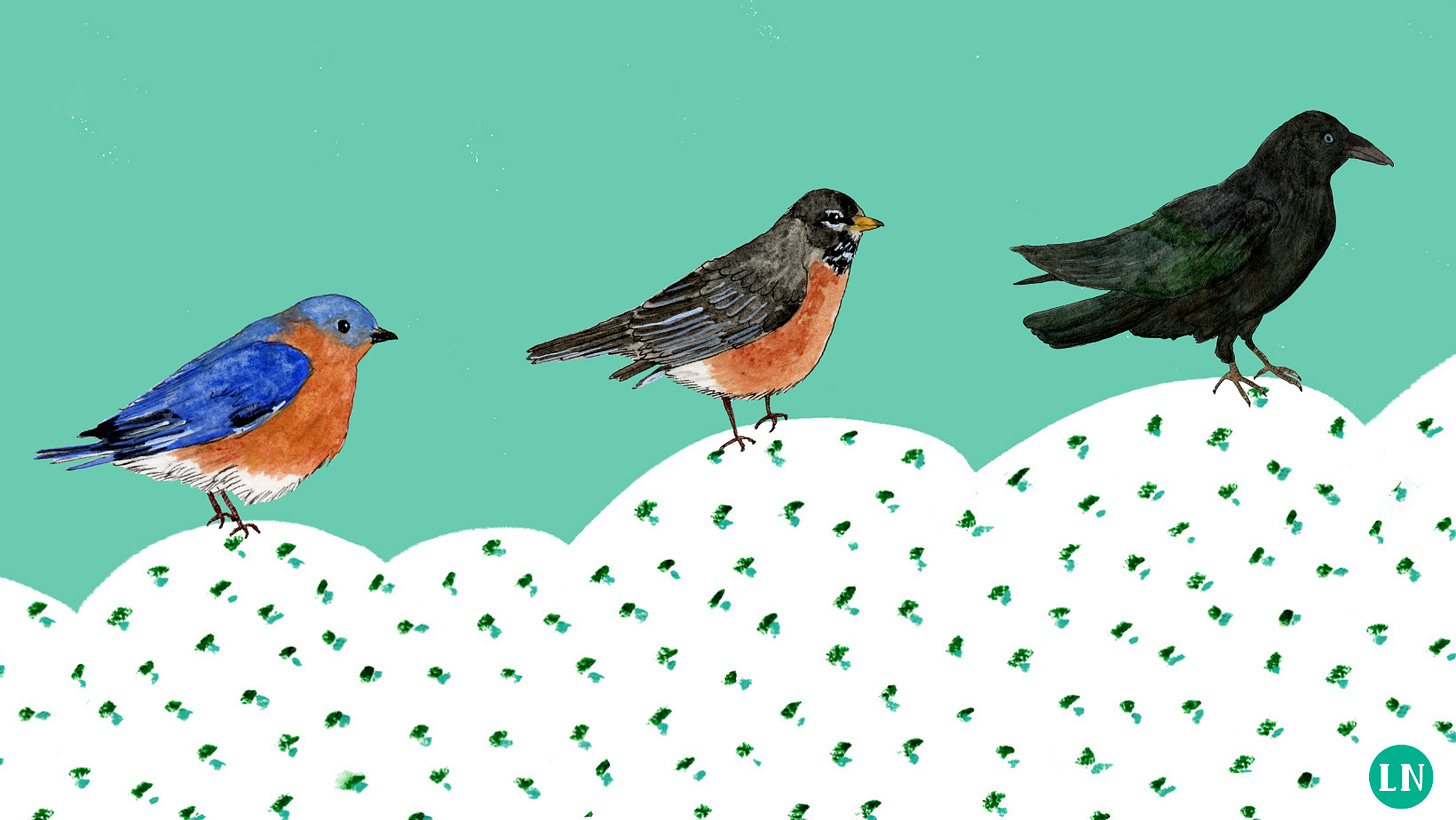
Creating a Patreon was a challenge with my limit on standing. I recorded and re-recorded the introduction video a lot to try and synthesize the backstory. I’ve made it support-only (versus tiers of graduated rewards), with funds going toward supporting the business and new podcast plans and a redesign, as well as supporting me at a time where I’m unable to work as I used to due to my ongoing CSF leak.
The Patreon is at 133 people, which is a lovely endorsement after only a few days in the world. Very grateful!
And speaking of endorsements, George from Travel Blogger Buzz wrote what is easily the funniest one I’ve seen about me:
Started my day off with a laugh.
It would make one big statement on a t-shirt, no?
As with the other illustrations of late, the birds and patterns for the Patreon were inked by Ella, the artist who has collaborated with me for my food maps, celiac logos. After a decade + of working together, we make a good team! Her work is always a delight, and we were able to keep the family of colours together between this newsletter, the LN redesign, and the new launch. Yay!
The Best Things I Read This Month
1/ An Ode to Low Expectations | The Atlantic, March 2021. By James Parker.
Short piece that is precisely the balm we all need during complicated times:
Strive for excellence, by all means. My God, please strive for excellence. Excellence alone will haul us out of the hogwash. But lower the bar, and keep it low, when it comes to your personal attachment to the world.”
“Revise your expectations downward. Extend forgiveness to your idiot friends; extend forgiveness to your idiot self. Make it a practice. Come to rest in actuality.
2/ Sounding the alarm: How noise hurts the heart | Knowable Magazine, February 12, 2021. By Cypress Hansen.
My spinal CSF leak has made me extremely more sensitive to noise, which can be frustrating. But scientists are finding that even when not as sensitive as me, noise can have deleterious effects on the body, specifically to the cardiovascular system.
Noise can cause significant changes to the endothelium, the inner lining of arteries and blood vessels, taking them from baseline to inflamed and always “active” — which has some consequences.
How does this happen?
The path from noise to blood vessels goes something like this: When sound reaches the brain, it activates two important regions: the auditory cortex, which interprets noise, and the amygdala, which manages emotional responses to it. As noise gets louder, and especially during sleep, the amygdala activates the body’s flight-or-fight response — even if the person isn’t aware of it.
Once in fight or flight, the body releases hormones of stress into the body, like adrenaline and cortisol. The cascading stress response also eventually leads to oxidative stress and inflammation in the lining of blood vessels, which can affect blood flow and contribute to a range of cardiovascular illnesses, including high blood pressure, plaque buildup in the arteries, obesity and diabetes.
So how much noise are we talking about?
Studies on people and mice show that the endothelium doesn’t work as well after just a few days of nighttime airplane noise exposure.
Oh, uh. Ok. Less than one might think. Another study had healthy adults listen to train recordings during sleep, which impaired blood vessel function almost immediately.
Solutions are tough when in a loud or crowded area, but perhaps noise-cancelling earphones are a start? Definitely takes a lot less noise than I (and scientists) expected to see negative consequences.
3/ Why Does the Pandemic Seem to Be Hitting Some Countries Harder Than Others? | The New Yorker, February 22, 2021. By Siddhartha Mukherjee.
Throughout COVID-19’s reign around the world, people have understandably sought out answers about why it ravages some places more than others. There have been some ridiculously reductionist pieces that did not do the topic justice, and then there is Mukherjee’s thoughtful, more varied take. The piece provides a good insight into the multitude of factors that could play into the surprisingly low numbers in some densely populated, economically disadvantaged regions.
"As the pandemic engulfed the world during the past several months, I kept returning to the question of what might explain these discrepancies. It was an epidemiological whodunnit. Was the "demographic structure" of a population the real factor? Were the disparities exaggerated by undercounting, with shoddy reporting systems hiding the real toll from public-health analysts? Was government response a critical variable? Or were other, less obvious factors at play?"
4/ How a Shadow Army of Ghost Kitchens Took Over America’s Restaurants | Marker, February 10, 2021. By Adam Chandler.
Restaurants are a very risky undertaking, and ghost restaurants have popped up to fill a need for food — with significantly less hazards. With a ghost kitchen, the restauranteur rents from a landlord at a kitchen spot (like Kitchens United or Cloud Kitchens), then lists their spot on delivery apps like DoorDash or UberEats or Seamless. No necessity for a physical restaurant any more.
For now, the future of dining appears to be strange, literal-named entries on delivery apps and outfits like the ghost Chipotle in Highland Falls, New York, which has a dedicated entrance for pickup orders and another for catering. For everyone else beyond the orderly operations of established brands, there is also considerable chaos happening on the street level in the fight to keep going.
By focusing on speciality items (burgers, or poutine, or specific dishes or food categories), ghost kitchens can avoid expensive real estate costs, providing a big shift in who can enter into the food business.
Further reading: a great piece by Rachel del Valle called “When Did Generic Grocery Brands Get So Good Looking”, which also delves into how co-manufacturing helps lower costs and allow for packaging innovation.
5/ Personal experiences bridge moral and political divides better than facts | PNAS, February 9, 2021. By Emily Kubin, Curtis Puryear, Chelsea Schein, & Kurt Gray.
This is a study that shows that using facts is not the way to convince political opponents of the validity of your position. The link is from the Proceedings of the National Academy of Sciences (PNAS), the official journal of the National Academy of Sciences (NAS).
The study found that subjective experiences and stories — especially stories that show harm that was suffered — are what people find garners respect:
People believe that facts are essential for earning the respect of political adversaries, but our research shows that this belief is wrong. We find that sharing personal experiences about a political issue—especially experiences involving harm—help to foster respect via increased perceptions of rationality. This research provides a straightforward pathway for increasing moral understanding and decreasing political intolerance.
One of the authors, Kurt Gray, also noted on Twitter that “the reason facts fail when it comes to moral disagreement is because they seem untrue in this post-truth "fake-news" world.”
The takeaway? Use personal experience to convince people of something, even if you know the facts support you.
Further Reading:
Why Facts Don’t Change our Minds, Elizabeth Kolbert in the New Yorker, February 2017
How to Have Better Arguments Online, Ian Leslie in the Guardian, February 2021
Persuading the Unpersuadable, Adam Grant in Harvard Business Review, February 2021.
6/ Spark Bird | Orion Magazine, February 19, 2021. By Emily Raboteau.
Keeping with this month’s bird theme: a journey about bird murals, street art, racial justice, and the decline in bird populations. Beautifully-written piece.
The title, explained: “Among people who watch birds, it’s often the case that a first bird love, the so-called “spark bird,” draws them forever down the bright and rambling path of birding.”
7/ Solar panels capture more sunlight with capsaicin - the chemical that makes chili peppers spicy | The Conversation, January 13, 2021. By Jon Major
Researchers have found capsaicin, a chemical in chilli peppers, makes solar panels more efficient:
Adding capsaicin expands the grains which make up the active material of the solar cell, allowing it to more effectively transport electricity. More importantly, the material goes from having a deficit of electrons to having an excess, changing how the cell operates and allowing more sunlight to be converted to electricity. In essence, adding capsaicin adds electrons, which may or may not be the same effect you experience on your tongue after a particularly spicy biryani.
Interesting commentary as well about the overlap between food and chemistry.
8/ Tourists are welcome in Oaxaca, Mexico. Their increasingly bad behavior is not. | Washington Post, February 26, 2021. By Natalie B. Compton.
If you’re going to travel during a global pandemic, the least you can do is put on a mask. Oaxaca and the surrounding valley are full of people who are in high-risk health situations and isolated from good care. As Natalie writes:
With little access to medical care, those communities have been particularly vulnerable during the pandemic. Many closed to outsiders to protect themselves, but some have started welcoming back visitors for income despite the risk involved.
Bad tourist behaviour isn’t new, but during a pandemic it has deadly consequences.
Grab Bag!
Sundry things that caught my attention.
February brought us the Super Bowl, or for those not gridiron-inclined, the Superb Owl. Alan Taylor put together an owltastic mix of pictures on The Atlantic, including the juvenile spot-bellied eagle owl, above.
London Greenground map, by graphic designer Helen Ilus. This wonderful map connects London's parks, forests, cemeteries and waterways, making it easier to explore the city's green space. (More about the map plus a downloadable PDF, here.
A long (10+ hours) playlist of soothing sounds and music to calm your soul during a stressful time.
Was Martha Stewart the original influencer? This Harper’s Bazaar profile certainly makes the case! Also on the influencer train: “Local health departments are counting on lifestyle bloggers and fitness experts to get their message out,” from The Atlantic.
“Pursuing perfectionism is antithetical to pursuing joy”. Cherie Berkley on how perfectionists and pandemics don’t mix well.
Opened in March 2019 on the Nishikigawa Seiryu Line in southern Japan, Seiryu Miharashi station features a platform to take in the view — with no way out. The train stop exists to encourage people to take in the natural beauty of the landscape, since there’s nothing but a small platform to explore. To continue on, you must wait for the next train to come and get you on the route. Only a few trains stop here, but the view certainly makes it worthwhile. Add it to your list for when it’s safe to wander once more!
Twitter Thread of the Month, keeping with the bird theme:
Thank you for reading!
-Jodi

